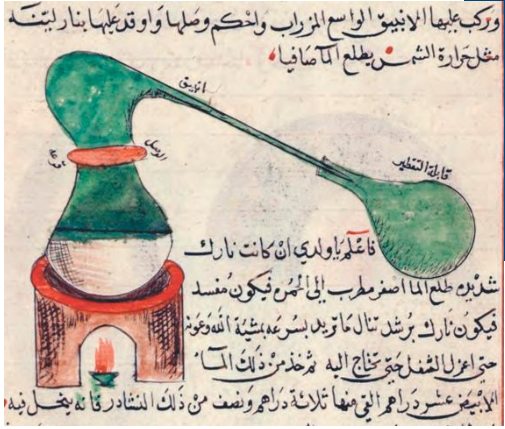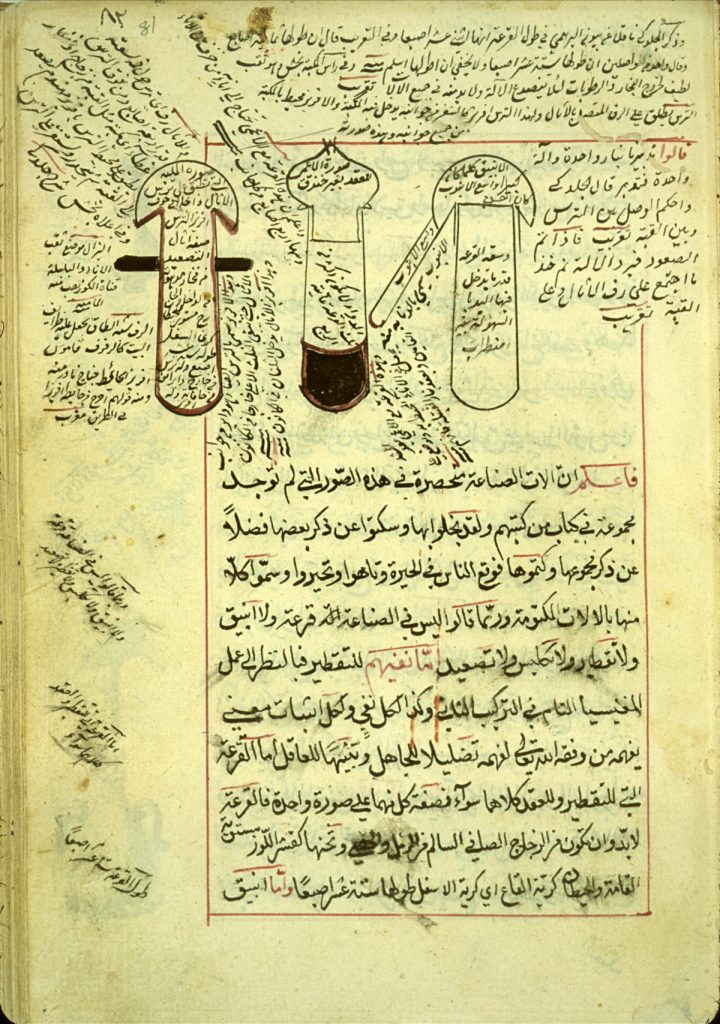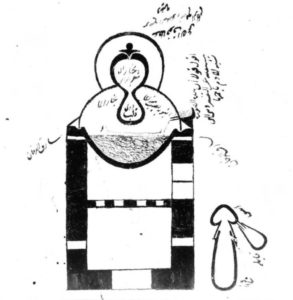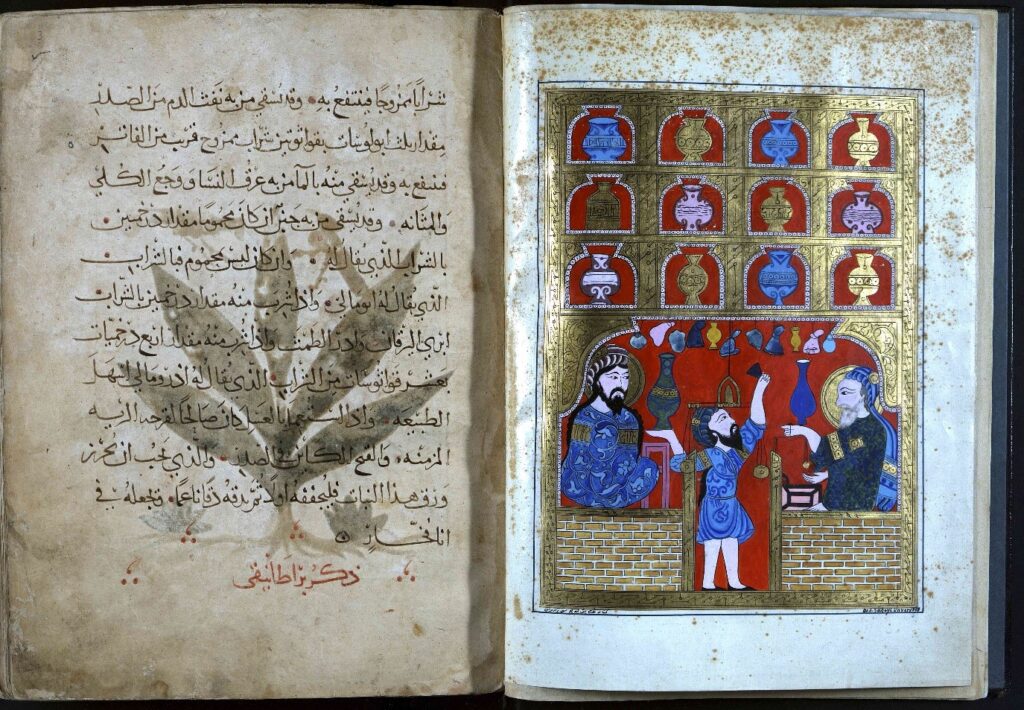Syed Numanul Haq

It is well known among historians that scattered, all over the world, in numerous manuscript collections, is a very large body of tantalising medieval Arabic writings attributed to an enigmatic figure – Jābir ibn Ḥayyān. The standard scholarly view is that this corpus is virtually all apocryphal, that its alleged author may have never existed, and that it is alchemical in its fundamental drift. The identity of the author or authors of the corpus has been the main focus of several generations of contemporary researchers, but a major breakthrough came in the first half of the twentieth century with the formidable studies of Paul Kraus, whose monumental two-volume work, Jābir ibn Ḥayyān: contribution à l’histoire des ideés scientifiques dans l’Islam, still remains unsurpassed in its astounding range and uncompromising rigour.1 Kraus concluded that, with the possible exception of one treatise attributed to Jābir,2 the grand corpus Jabirianum is the work not of a single individual, but of a fraternity of authors of Qarmaṭī Ismāʿīlī doctrine and that this corpus was written not in the second/eighth century, as it has been traditionally asserted, but it rather came into light, piece by piece, over a period of one hundred years beginning no earlier than the second half of the third/ninth century.
Under this brief and docile description, there are, various questions that include fundamental implications regarding the historian who undertakes the task of carrying out an examination and critical edition of Jabirian treatises. To begin with, Kraus’s view has not gone unchallenged in more recent scholarship.3 I have myself pointed out that the existence of only one full-scale study of Jābir in the English language is problematic and needs further examination.4 A bit earlier, Pierre Lory spoke about the possibility of a small authentic core of Jabirian writings around which, he suggested, grew the larger body of spurious texts.5 So who wrote the Jabirian corpus? When did its author(s) live? Or, even more intractably, who wrote each text of this corpus? If there is indeed an authentic core of the corpus, how do we identify this core? Is ‘Jābir ibn Ḥayyān’ the name of a historical person who lived, according to the Arabic tradition, during the time of the sixth Shīʿī Imām Jaʿfar al-Ṣādiq (d. 147/765)? And was he the Imām’s disciple?
There are no easy answers to these questions. Nor are these questions trivial or peripheral for the editor of Jabirian texts. Obviously, these texts cannot be understood in a historical vacuum - but what is their historical milieu and their doctrinal context in the history of thought? If critical editors are unable to prove with some reasonable degree of certainty the date of a given treatise, what principles should guide their possible textual emendations? In choosing among variations of manuscripts, what should be the choice’s criteria? During the process of textual obscurities’ identification, where should the critical editor seek illumination? From which historical sources? Making a critical edition, as all scholars know, is not just a linguistic task; it is also a historical and substantive task.

But this is just a small thicket of the jungle. The sheer scope of the massive corpus Jabirianum presents yet another formidable difficulty for the editor. The corpus is generally referred to as ‘alchemical’ - but one must here abandon the common view of alchemy as having to do essentially with turning base metals into gold, and as constituting the pre-history of the modern science of chemistry; this view flies in the face of overwhelming textual evidence to the contrary. Thus, on the one hand, Jabirian writings deal with the theory and practice of chemical processes and procedures (tadbīr, pl. tadābīr), classification of substances, medicine, pharmacology, astrology, theurgy, magic, the doctrine of the specific properties of things (ʿilm al-khawāṣṣ), artificial generation of living beings (takwīrr, kawrr, tajmīʿ) - all of which are interspersed with extensive discourses on logic, philosophy, natural and artificial formal languages, astronomy, arithmetic, geometry, music and cosmology. This is daunting as it is. But, then, on the other hand, the corpus also contains a large cluster of religio-political writings, embodying the chiliastic cosmology of proto-Shīʿī gnosis and a whole confusion of sectarian propaganda – here one finds discourses on the occultation of the Imām and his messianic return, on the unfolding of the history of Shīʿī hierarchy and on the politically charged question of the rightful leadership of the Muslim community, in addition to tantalising astrological predictions marking political events as well as Qur’ānic exegesis of a peculiarly Shīʿī doctrine.
Equally massively and diversified is cited the body of the historical or legendary references, invoked or quoted in the corpus. Zosimus appears, for example, in the Kitāb al-Ḥajar6, Democritus in the Mujarradāt7, Hermes in the Ḥajar8, Agathodemon in the Qarār9. Also mentioned, are Socrates - who is referred to as ‘the father of philosophers and their master’ in the Tajmīʿ10 - as well as Plato11 and Pseudo-Apollonius of Tryana, Balīnās12. then, throughout the corpus, we come across quotations from all parts of Aristotle’s works13, as well as from the commentaries of Alexander of Aphrodisias14, Themistius15, Simplicius16 and Prophyry17. Galen looms large: liberally cited are his De pulsibus and De pulsibus ad tirones in the Kitāb Ikhrāj18; De compositione medicamentorum secundum in the Kitāb al-Tajmīʿ19; De simplicium medicamentorum temperamentis et facultibus in the Kitāb al-Ḥāṣil20; De elementis secundum in the Sabʿīn21; De usu partium in the Sabʿīn22, and De facultibus naturalibus in the Kitāb al-Baḥth23. Archimedes and Euclide are not only referred to, but - like Socrates, Plato, Aristotle, Balīnās and other – a separate treatise is devoted to each one of them.24 In addition, the Ḥāṣil preserves along extract from the Placta philosophorum of pseudo-Plutarch. And, of course, all over the Jabirian corpus numerous references are found about the Shīʿī Imām Jaʿfar al-Ṣādiq (d. 147/765), who is claimed to be the author’s teacher and lord, the Master under whose direct guidance, the author has composed his works.25 Given this encyclopaedic character of Jabirian writings, this number of references to ancient and classical figures and this tremendous vastness of scope, as well as more complete and intelligible picture of these texts’ contents, can not easily be drawn. It is clear, for example, that these writings have to be approached from at least two different angles: 1. from the perspective of Islam’s religious history and 2. as a historically scientific problem. But in both cases one has to grope in the dark and similarly to alchemy’s early history, which is characterised by obscurity, the same applies to the historic origins of the Shīʿī sects in Islam. Both these areas are still fraught with controversies, confusion and chaos, as all contemporary historians know well.

Added to these challenges is, of course, the philological challenge of understanding the language of the Jabirian corpus. To be sure, the author avoids the obscure allegories typical for the Hellenistic alchemists and even for some later Muslim alchemical writers, such as Ibn Umayl or Dhū al-Nūn al-Miṣrī (d. 245/859). But his style is often crude, odd and uneven, frequently violating standard syntactical rules. More critical, however, is the problem of the technical terms in the corpus for which our standard lexicographic aids prove to be seriously inadequate. Thus, to make sense of Jābir's scientific language, one has to go through the laborious process of seeking help from the works of other Arabic alchemists, toxicologists, pharmaceutical naturalists and those like them. But this may not be a sound methodology, because if Jābir is the first alchemist of Islam - a possibility we cannot definitively overrule – seeking illumination from later writings would constitute a reverse process which cannot help us much in settling the particular question of the corpus’s date. And, as for the earlier alchemical writings, they can hardly throw any light on Jābir, since they are much more obscure.
Then, there is the practically insurmountable problem of Jābir’s peculiar characteristic of ‘esotericism’. As it is generally known, alchemy has traditionally been a secret practice. Thus, at many parts of the corpus, we read warnings of the author’s alleged master, Jaʿar, that these writings should never be allowed to fall into the hands of unworthy or irresponsible people.26 But quite unlike the ancient practice of using nicknames and allegories, Jābir’s ‘esotericism’ consists of what he calls tabdīd al-ʿilm, the ‘principle of knowledge’s dispersion: truth was never to be revealed completely in one place. Rather, it was the author’s aim to break it up into small bits and, like so many pieces of a jigsaw puzzle, spread it all over the maze of a vast corpus: ‘My books are numerous and knowledge is dispersed among them’, he says in the Khawāṣṣ.27 No single treatise was therefore complete – by definition – each remained fragmentary.
The author always insists that the reader ought to refer to other works of his, in order to get the whole meaning of what is being taken into consideration within the treatise; while other works urge the reader to consult others and so on. ‘Often in the middle of a treatise’, Kraus observes, ‘without any composition’s justification, Jābir inserts long bibliographic references’.28 In the al-Mīzān al-Ṣaghīr, for example, we read, ‘First collect my books and read what is in them. It behoves you, O reader, that you join these books together so that through prolonged study, the secret of creation and the art of nature is revealed to you.’29
With copious bibliographic references to its own works, the Jabirian corpus also gives clear instructions regarding the order, in which its different writings are to be looked at; it even specifies the number of times each one of them should be read. According to the Kitāb Maydān al-ʿAql, the student will draw no benefit, unless he has first read a great number of other treatises in the corpus.30 Furthermore, the Afāḍil should be read after all the others.31 In the Aḥjār one reads, ‘How can someone accomplish the task without reading the Ḥudūd. Reading this book is different from others. While others should be read once a month, the Õudúd should be read all the time.’32 Again, in the Afāḍil: ‘For the purpose of learning, the Ḥāṣil is better than the Afāḍil. This is attributed to the fact that the Afāḍil is like the aroma which emanates from things, whereas the Ḥāṣil is like their essence: the absence of the latter is the absence of the source.’33 Strictly speaking, then, one needs to have in front of him the entire body of Jabirian writings, in case the truth of the author’s teaching is sought. And while it is in principle possible to reconstitute his corpus and to complete the picture, in practice it remains an impossible task.

The ruthless application of the principle of tabdīd al-ʿilm may also explain the fact that in the same treatise, without contextual justification, the author often deals with vastly disparate subject matters. The author apologises: ‘Do not be angry, O my brother’, he writes in the Mājid, ‘you may find a discourse concerning religion in the middle of the discourse on alchemy, without the latter having been completed; or you may find a discourse concerning alchemy after a discourse on religion, before the principles of the latter have been fully established!’34 Characteristically, then, individual treatises of the Jabirian corpus deal with a whole multiplicity of subjects in a kind of a patchwork of numerous discourses - ideally, the editor of these texts needs an encyclopaedic of competency; and this is an asset that cannot be attained in practice. The Kitāb al-Aḥjār ʿalā Raʾy Balīnās, the text I have edited,35 deals with language, logic, grammar, music, prosody, geometry, theory of balance, natural philosophy, artificial generation, chemical procedures, cosmology and metaphysics! And this is typical: the Jabirian corpus is full of digressions, shifts of perspectives, discontinuities and half truths.
The editor who takes up the onus of annotating Jabirian texts, is also confronted with the problem of an irritating lack of consistency in them. Thus, in the classification of substances, for example, mercury is at one time counted among spirits36 and, at another time, among metals;37 substituting for it sometimes ‘glass’ (zujāj)38and sometimes the Chinese alloy Khārṣīnī39. Also, sometimes the status of mercury is specified categorically as in the above cases, and sometimes equivocally: ‘There is uncertainty concerning mercury’, writes Jābir in the Usṭuquss al-Uss, ‘it is a spirit with spirits, and a soul with souls’.40 Similarly, in the Sabʿīn, in the vein of a numerological speculation, a special status is accorded to the number 18; whereas in the Kutub al-Mawāzīn the number 17 is declared as the foundation of everything in the natural world.41 These inconsistencies are not easy to explain.
But despite these serious challenges, we cannot subject these writings to a total oblivion. Comprehended in them, is a very fruitful and interesting material not only for historians of science, but also for historians of religion, philosophy, culture and esotericism, as well as for anthropologists. Indeed, one notes with a degree of disappointment that the powerful work of Kraus has been followed by a period of relative indifference, and that the field of Jabirian studies, which attracted some of the finest scholars of the earlier generation, has been practically abandoned. Strictly speaking, there are only two volumes of critical edition of Jabirian texts, the slender volume of the edition of Pierre Lory containing 14 small treatises;42 and my edition of the Kitāb al-Ḥajār ʿalā Raʾy Balīnās which is based on all available manuscripts.43 This is not a rich harvest, representation, but a tiny part of a very large corpus.
| Source note: This was published in: The Earth and its Sciences in Islamic Manuscripts: proceedings of the fifth conference of Al-Furqān Islamic Heritage Foundation – English version, 2011, Al-Furqan Islamic Heritage Foundation, London, UK. p 221-232. Please note that some of the images used in this online version of this article might not be part of the published version of this article within the respective book. |


